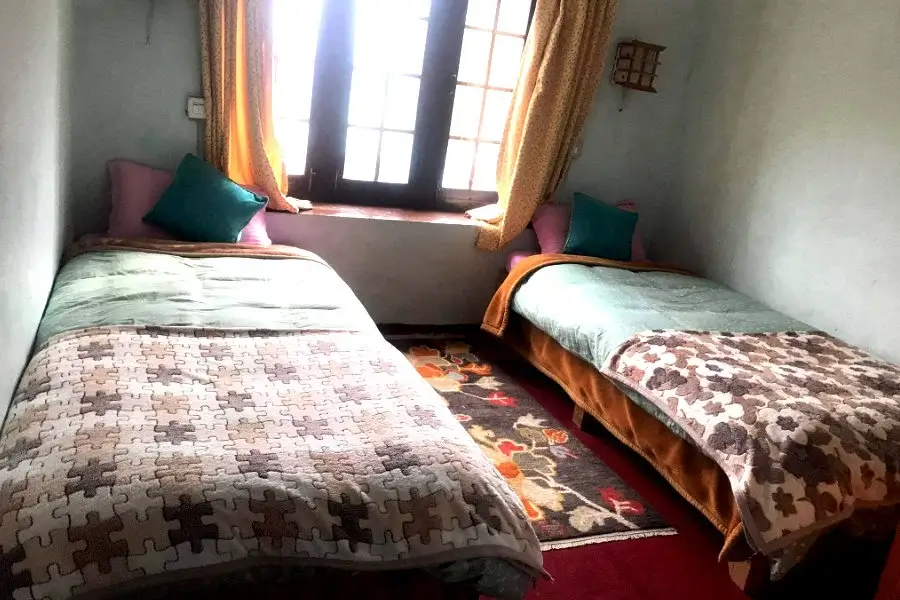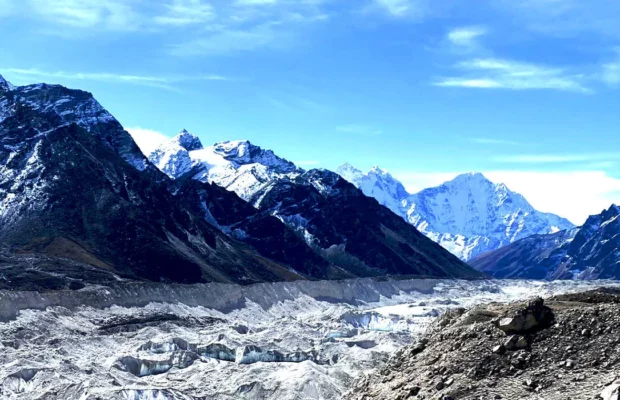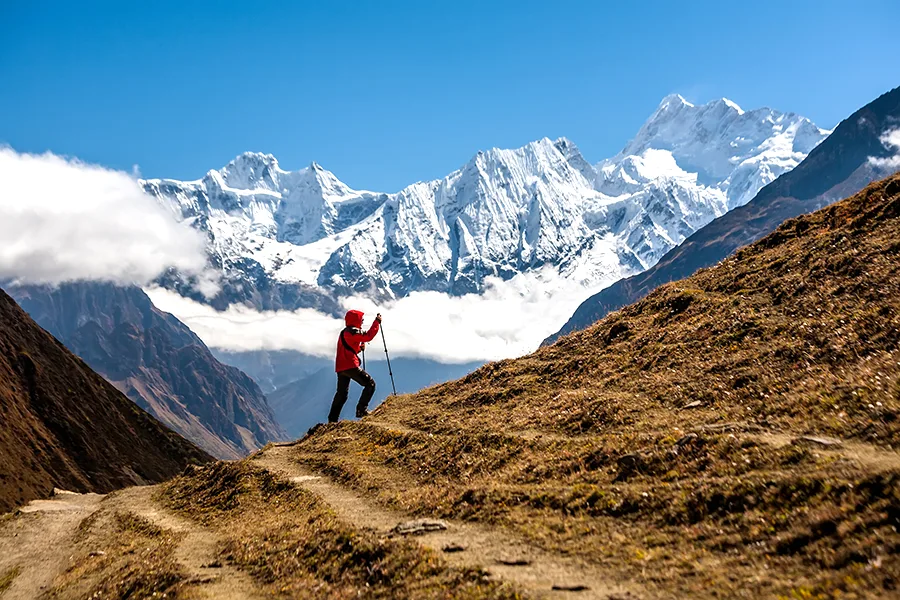10 Facts You Should Know Before Trekking to Everest Base Camp
Trekkers from all over the globe go to complete the trek to Everest Base Camp because it is a must-do experience.
This fantastic trek will eventually get you to Mount Everest’s base camp after passing through stunning vistas, charming communities, and challenging terrain.
Here are ten helpful tidbits of knowledge to assist you in getting ready for this fantastic adventure if you’re thinking about doing it.

Top 10 Facts of Everest Base Camp Trekking
1. The length and route of the trek
The Everest Base Camp journey typically at least 10 to 17 days, depending on the schedule and acclimatization days.
It’s critical to give your body adequate time to adapt to the altitude to prevent altitude sickness.
To improve your chances of a successful and pleasurable journey, consider choosing an itinerary, including acclimatization days.
2. Requirements for Fitness
While technical climbing abilities are not necessary on the Everest base camp trip, it is a strenuous journey that demands general solid fitness.
Regular cardiovascular workouts like cycling, hiking, or running help your body prepare for the voyage.
Strength training practices focusing on the legs, core, and upper body can also help you run longer and more continuously on the trail.
3. Preventing Altitude Sickness
Everyone is susceptible to altitude sickness, regardless of their degree of fitness or prior hiking experience.
Acclimatizing enough is crucial for avoiding altitude sickness because it gives the body time to get used to the thinner air.
Drinking enough water, eating well, and avoiding being too exhausted before going for a walk are suggested.
Ask your doctor about drugs that may help avoid altitude sickness, such as acetazolamide (Diamox).
4. Important Items to Pack
Having the appropriate equipment is crucial for a secure and enjoyable hike. Comfortable Trekking shoes, wicking clothing, a comfortable, warm sleeping bag, a down jacket, a waterproof cover, and sunglasses. Packing essentials should include gloves, a headlamp, sunscreen, and a first aid kit.
Water purification pills should be brought along since there may only sometimes be access to clean drinking water on the path.
5. Hostels and Tea Houses
Tea houses through the Everest Base Camp path provide hikers inexpensive lodging and food. These tea shops offer a unique cultural encounter and an opportunity to socialize with other hikers.
Given the possibility of minimal amenities, carrying a suitable sleeping bag (-15-20 degrees) with a liner for additional warmth and comfort is advised. During busy times, reserving a tea house room in advance is suggested to ensure a spot.

6. Food and sanitation
Meals always serve in various tea shops along the path, featuring both foreign and native Nepali cuisines. Choose warm, prepared meals rather than raw or undercooked ones to reduce your chance of experiencing digestive problems.
Always have hand sanitizer on hand and use basic hand hygiene to stop the transmission of germs. Bring energy bars to keep yourself going throughout a long day of hiking.
7. Weather and the Best Trekking Season
The Everest region’s weather is very unpredictable and subject to sudden changes. March through May and September through November are the best months for trekking since they occur between the spring and autumn seasons. That is because the weather is generally constant, and the sky is usually clear throughout these months.
Pack layers of clothes to adapt to changeable weather conditions and prepare for frigid temperatures, particularly at higher elevations.
8. Porter & Guide Services
While it is feasible to hike to Everest Base Camp on your own, doing so may improve your experience & boost your safety. Experienced guides may provide insightful information about the area and have a vast understanding of the path and regional culture. They can manage any unanticipated issues that may emerge throughout the hike and provide assistance with navigation.
On the other side, porters can help your Backpack, enabling you to hike more comfortably and take in the scenery. Employing a guide and porters not only makes life easier, but it also helps the economy in the area and gives the community job possibilities.
9. Entry Requirements and Permits
Securing the required permissions and meeting the entrance criteria before starting the Base Camp of Everest journey is crucial.
The two necessary permissions are the Sagarmatha National Park’s Entrance Permit & the Khumbu Pasang Lhamu Rural Municipality Permit. These entrance permits apply in Monju and Lukla, the gateway to the Everest area, or Kathmandu.
It informs you need a valid passport for at least six months from the day you enter Nepal.
10. Environmental Points to Take
It would help if you made every effort to have as little of an effect as possible on the delicate ecology since the Everest Base Camp hike is in a magnificent natural setting.
Follow the guidelines of Leaving No Trace, especially the call for disposing of your rubbish correctly, utilizing designated restrooms, and respecting regional customs and culture.
Applying a reusable water bottle and water purifying techniques can help you avoid using single-use plastic bottles.
Supporting local conservation efforts and sustainable tourism projects helps preserve the area’s natural beauty for future generations.
A once-in-a-lifetime experience, the Base Camp to Everest journey is loaded with breathtaking scenery, fascinating cultural encounters, and personal accomplishments.
You can get the most out of this fantastic tour if you are emotionally and physically prepared, respect the environment, and travel harmoniously with the local population. Always remember to take time to relax, soak in the gorgeous scenery, and make lifelong memories.
Frequently Asked Questions (FAQs)
How challenging is the journey to Everest Base Camp?
The trip to Everest Base Camp is rated as being quite challenging. Due to the long treks and high altitude, it needs solid physical endurance.
Is prior trekking experience required to complete the Everest Base Camp trek?
Although it is advantageous, prior trekking experience is not required. Individuals with ordinary fitness levels may finish the journey with the proper planning, training, and acclimatization.
How much does the climb to Everest Base Camp cost?
The price for the Everest Base Camp journey might vary based on the length, route, lodging preferences, and services used. Excluding international flights, the voyage may cost approximately $1,200 to $4000 on average, depending on the services. You May see in this link.
Is the climb to Everest Base Camp secure?
Generally, hiking to Everest Base Camp is risk-free, particularly when suitable safety precautions are taken, such as acclimatization, hiring knowledgeable guides, and walking with a respected organization.
What are the best parts of the hike to Everest Base Camp?
The Everest Base Camp journey provides experiences with Sherpa culture, customs, and stunning vistas of Everest and other high peaks.
Conclusion
The trekking trip to Everest Base Camp each day is awe-inspiring, from the bustling Sherpa settlements to the spectacular vistas.
Every step of the walk is full of excitement and mind-blowing experiences, from the physical obstacles to the cultural contacts. You may confidently go off on this fantastic adventure and make it an experience you will remember by considering the aspects and making the necessary preparations.








